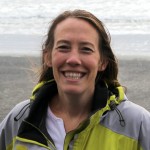I’ve been thinking about products, user experiences, and value creation since the dawn of time– or at least since the turn of the century in the fall of 2000.
What I do… really short:
-
- Understand users/customers like nobody else
- Grow businesses based on understanding their users, data, competitors, and the company itself
- Define product visions and then drive product strategy, execution, and measurement at global scale
- Create engaging and empowering customer experiences
- Have fun, grow people, and bring everyone on the product journey with me
- Wear a smile
What is important to me?
-
- Doing what’s right. Period.
- Thinking, learning, creating, pushing boundaries. Every day.
- Growing. And no, not like “grow 2 inches and gain 10 pounds” that made me burst out laughing when I read it my annual review one year. Rather, growth that comes from those bold colleagues or friends that offer feedback, making a decision that may not have been right, self-analysis, observation…
- Belief that what I’m doing makes a difference. To me. To the world. To somebody that’s worth that energy and brainpower.
- Engaging with people. Family, friends, coworkers, a random woman on a bus that owns a pie shop in Otavalo, Ecuador…
- Continuing to explore the world. Traveling opens my eyes.
- Enjoying the great outdoors. Happiness is hiking a mountain or running 26.2 miles with a giant smile on my face.
What I do…with a bit more detail:
I build products with a laser focus on the user.
-
- My entire professional career has been focused on customer experience: researching it, developing it, growing it, and maintaining consistency globally…and measuring it. I have an MS in Human Factors Engineering from Tufts University which helped lay the groundwork, and then hands-on experience at big companies (Expedia), medium-sized (Nuance Communications, Payscale), and tiny start-ups (VoloMetrix, Chatbox).
- Based on my users’ needs, business drivers, analytics, and competitive forces, I develop, own, and execute business plans and roadmaps for global products. My bagillion-dollar Wharton MBA adds some value here.
- I understand the lifecycle of customers; I own onboarding, sales, delivery, and customer service experiences through my products.
- I dive into my products, know them better than the back of my hand—and I can translate the “how” or the “why” back into meaningful customer/client language, helping them to really understand—and buy into—the value.
I’m a strong communicator, team builder and player, and process improver.
-
- I am an expert at translating between technology, sales, marketing, operations, finance, customer support, and legal teams. I even did an undergraduate thesis in computer science at Dartmouth, so no wool-pulling over my technical eyes. And yes, marketing, sales, finance, and ops, I’ll actually look at and ask you questions about your numbers and models…
- I am fully accustomed to the complexities of prioritization between different organizations, leaders, regions—and more. It’s a great challenge.
- I build and lead cross-functional teams: product, QA, analysts, content developers, UX, UI, researchers, and more. I love growing people.
- I’m very comfortable in working to improve process around product delivery; I’ve held several roles where redefining how we deliver product was critical to our success. I enjoy the thought-leadership and learnings that come with flexibility, trial, and growth.
I am global.
-
- I purposefully seek opportunities with global exposure to my users/customers,
product, stakeholders, and markets. That’s the space I thrive in! I’ve interviewed customers/users in over 20 countries, traveled to over 70 countries, and am also conversationally fluent in Spanish. Oh, and I also have an MA in International Studies from the Lauder Institute at the University of Pennsylvania… with a book chapter published on Sustainable Tourism in the Galapagos.
- I purposefully seek opportunities with global exposure to my users/customers,
And if you’re interested… how this all came to be:
As I mentioned, I’ve been thinking about products, user experiences, and value creation for the past 19 years.
How’d I get started? In college at Dartmouth, I had a great professor who encouraged me to do a computer science thesis creating a graphical baseball scorecard program. People could drag around the little team members, and show where the ball went– and it automatically updated a backend, querriable database. Now, the fun part definitely wasn’t coding, the fun part was sitting in the lab asking friends and strangers to tell me whether something was intuitive or whether something else made no sense, and watching how people interacted with the interface itself. Did it align with what they expected? Why not? What should it do? ….and yes, this was pre-touchscreen, pre i-anything, pre-explosion-of-the-term “user-experience”.
To continue pursuing this new-found passion around “people and technology– and how to make their interactions better”, I did an MS in Human Factors Engineering at Tufts University. There I studied robotic surgical systems, their integration into the operating room, and the effects of training, communication, memory, haptic / loss of haptic feedback, etc, on errors and outcomes. No master’s is complete without the pain and suffering of publications…and those are listed below.
Next up, I was fascinated by a presentation I heard in one of my classes about people who actually designed automated speech recognition systems for big companies. Who does that?!?! Well, a team of soon-to-be colleagues at SpeechWorks (turned ScanSoft turned Nuance) is who did that. I loved going in to companies (like Verizon, Comcast, AIG, United Airlines), meeting with their leadership to understand what, from a business point of view, they were trying to accomplish with these systems. I dove headlong into understanding who their users/customers were- what they were trying to accomplish when they called, what vocabulary they used, what situations they were calling from, etc. I sat in call centers, listened to calls, used any data I could get my hands on, and developed personas and scenarios. Then I worked to create the dialog and pathways people would experience as they called in. Down the line, I would record the voice talents, run usability tests, measure how it was doing after we released, and updated the design based on feedback/data. After 5 years of growing expertise, leading large projects, and enjoying the heck out of it, I decided to go to business school so that I could be better positioned to get in earlier on the “why” behind the creation and monitization of products.
Off to Wharton for my MBA I went– and I tacked on an MA through the Lauder International Studies Program also … because I love all things international and figured that would be a good way to prove it. If there’s such a thing as “focus” in business school, I had three: 1. Entrepreneurial management, 2. Spanish/Latin America, 3. Sustainable Tourism (book chapter published!). I also interned in Pune, India, with Infosys because I figured that outsourcing is here to stay so I might as well understand it better– and it was an amazingly eye-opening experience.
Post-Wharton… to be continued.
(In the meantime, if you’re curious, there’s always my linkedin profile.)
Publications
Webster, J. (2011). The Challenge of Sustainable Tourism. In M. Guillen & J. Nieva (Eds.) Green Products: Perspectives on Innovation and Adoption (135-164). USA: CRC Press, Taylor & Francis Group.
Moore, G., Moreira, D., Panosso, M., Thornsberry, C., Wallace, G., Webster, J. (2009) A Major Milestone in the History of Mexican Financial Markets. Knowledge@Wharton, Lauder Global Business Insight Report 2009: First-Hand Perspectives on the Global Economy, 37-40.
Webster, J. & Cao, C.G.L. (2006). Lowering Communication Barriers in Operating Room Technology. Human Factors, 48(4), 747-758.
Webster, J. & Cao, C.G.L. (2004). Divided attention in using robotic surgical systems. In Proceedings of the 48th Annual Meeting of the Human Factors and Ergonomics Society. 1751-1754.
Cao, C.G.L., Webster, J., Perreault, J., Schwaitzberg, S., Rogers, G. (2003). Visually perceived force feedback in simulated robotic surgery. Proceedings of the 47th Annual Meeting of the Human Factors and Ergonomics Society. 1466-1470.
